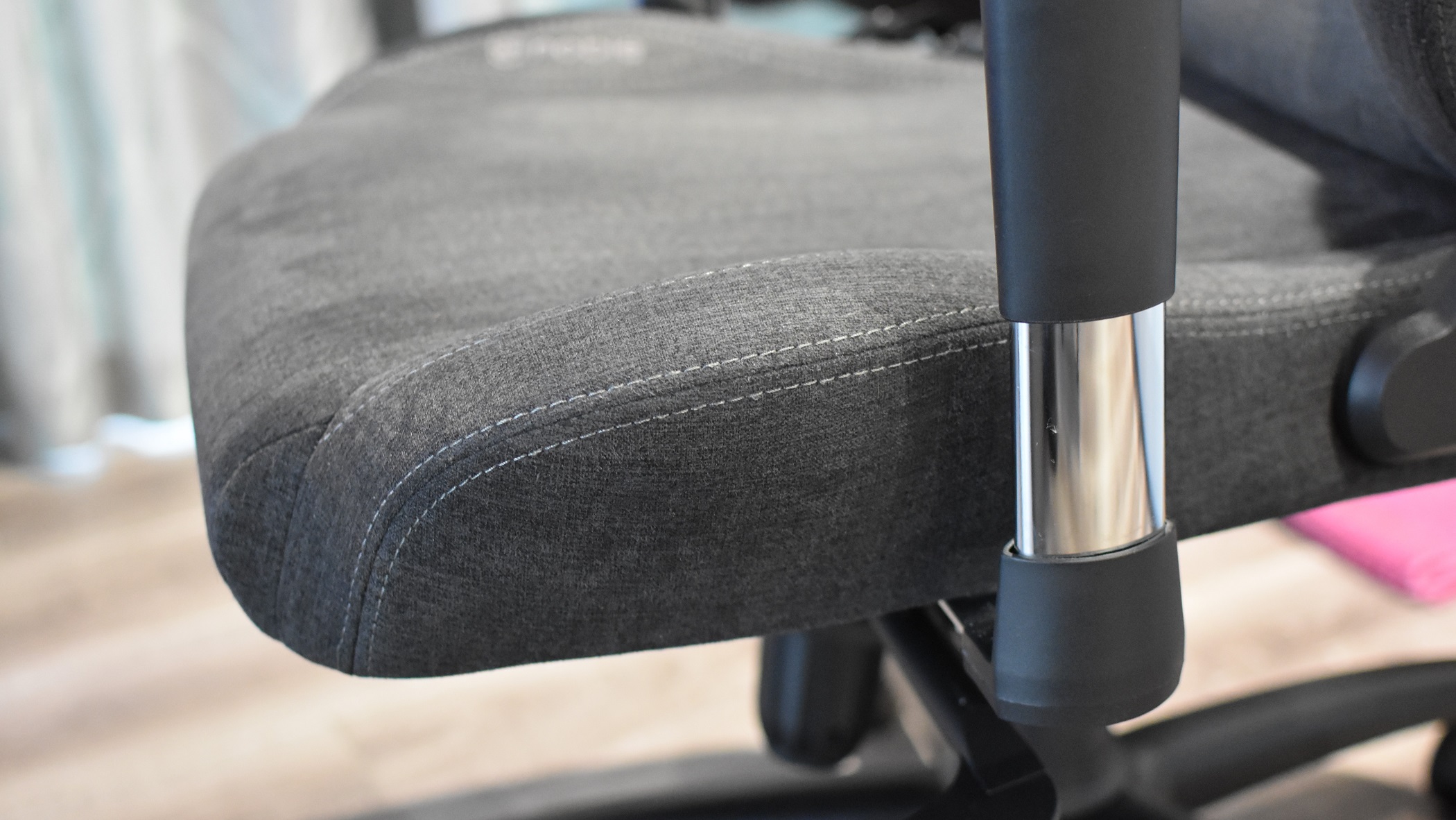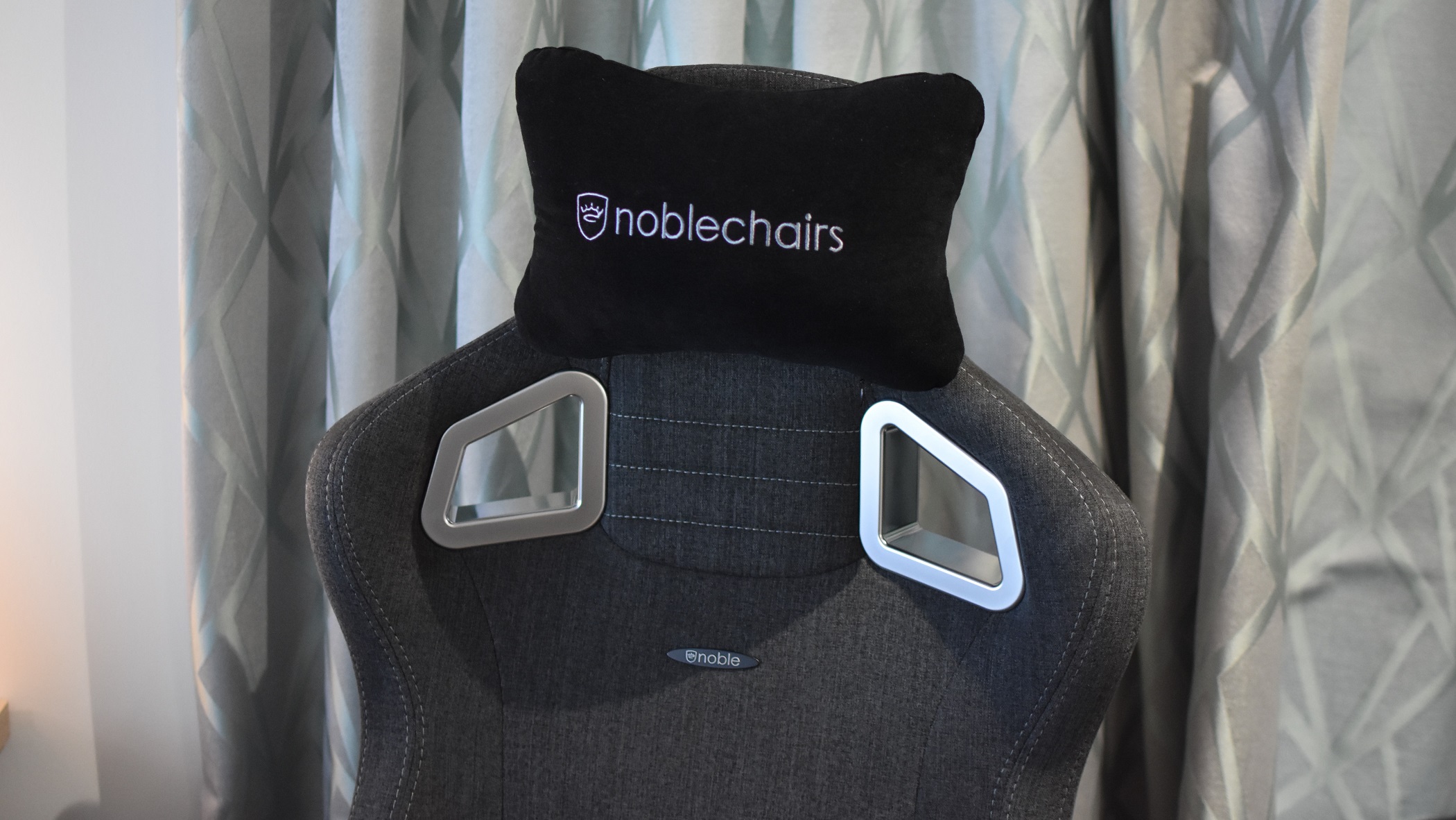And then the Noblechairs Epic TX comes along, and it’s got me rethinking. To be clear, I’m still convinced that many, if not most gaming chairs are ugly wastes of cash. And the Epic TX doesn’t address the underlying non-logic of gaming chairs: that they don’t provide any meaningful benefits to the actual playing of games, at least none that you couldn’t also get from a comfortable non-gaming chair. At least when we use phrases like “gaming mouse” or “gaming keyboard” it’s because they include extra buttons or focused features for genuine, practical advantages. Indeed, the Epic TX is still shaped like a bucket seat, which I’m sorry but will always be too evocative of Kirk Van Houten’s racecar bed. Despite this, though, it kind of looks alright? Unlike on the (somewhat) Katharine-approved Razer Iskur, there aren’t any weirdly harsh angles to the shape, nor any lame embossed slogans or overly loud colours. No colours at all, in fact, as this ‘Anthracite’ model I received for testing sticks with tasteful grey upholstery (that, coincidentally, matches my sofa) with lighter grey stitching. The Epic TX is also the only model in Noblechairs’ Epic range to use fabric as its main material, instantly making it preferable to all the others. The idea of leather being the ideal seating textile is a baffling worldwide delusion, and faux leather isn’t much better – they don’t breathe, they scuff if a shoe comes anywhere near them, and they make unflattering noises when you shift around on them. Naturally, gaming chairs love leather, but the Epic TX is a wiser one and opts for a more comfortable, breathable and durable fabric – which still feels fairly premium. Also, my cat likes to attack the sides when she’s pretending I haven’t fed her. And I can say from experience owning a faux leather chair that if the Epic TX didn’t use a woven fabric, it would be shredded like coleslaw mix. The actual damage? A single loose thread. For the human of the house, the Epic TX was fairly easy to build, and has proven sufficiently comfortable that I’ve not switched back to my office chair (an Orangebox Do) in the month that I’ve been parked on it. And because I work and play at the same desk, that’s some serious bum hours it’s put in without sagging, creaking or slowly ruining my spine, as another previous chair did. What I particularly like are the generous size and relatively flat ‘wings’ on the seat base; I’m both long-legged and fond of sitting with a foot under the opposite thigh, which isn’t the most ergonomic habit but is one the Epic TX has the room to accommodate. However I’m sat, my upper legs are always getting plenty of support too. There’s no adjustable lumbar support built into the chair itself, instead relying on a removable pillow that can be strapped into your preferred position. I’ve been comfortable enough without it, mind, and can take or leave the head pillow as well. The 4D adjustable armrests are much more of a highlight, slotting easily and securely into position, and when I’m feeling particularly slovenly it’s not too difficult to lean and tilt the whole thing backwards. The Iskur, by contrast, is so heavy that it takes a marked effort to rock back. Is it more comfortable than my Orangebox? Maybe not quite – I personally prefer the flexible feel of a mesh back than the solid, padded back of the Epic TX. But it’s definitely built better than the Do in places, like in the rock-solid metal base. Crucially, it also feels like I’m still sitting in a chair for adults, not a boy racer toy that’s trying to convince me it will make me better at shooters. Honestly, look at these things. I know a functioning seat could be anything from the Pope’s throne to an upturned bucket, but why are so many gaming chairs designed like they’re not in fact a piece of furniture? That you keep in your home? And will quite often have to look at, with your eyes? Truly there are some heinous designs out there, so the Epic TX’s straightforward styling ends up refreshing rather than dull. (To credit Noblechairs in general, their similarly fabric-finished Hero TX and Icon TX move even further away from mock-racing silliness, though I haven’t tested either for comfort.) At £330 / $420, the Epic TX is somewhere around the upper-mid tier of desk chair pricing, though also about £100 less than what my Orangebox Do costs with the 4D arm adjustment option. Neither of these have enough faults to make me crave a four-figure Herman Miller or similarly top-end office chair, for what it’s worth, and don’t forget that the Epic TX has a quality money can’t buy: it won’t embarrass a grown-up to sit in it.

